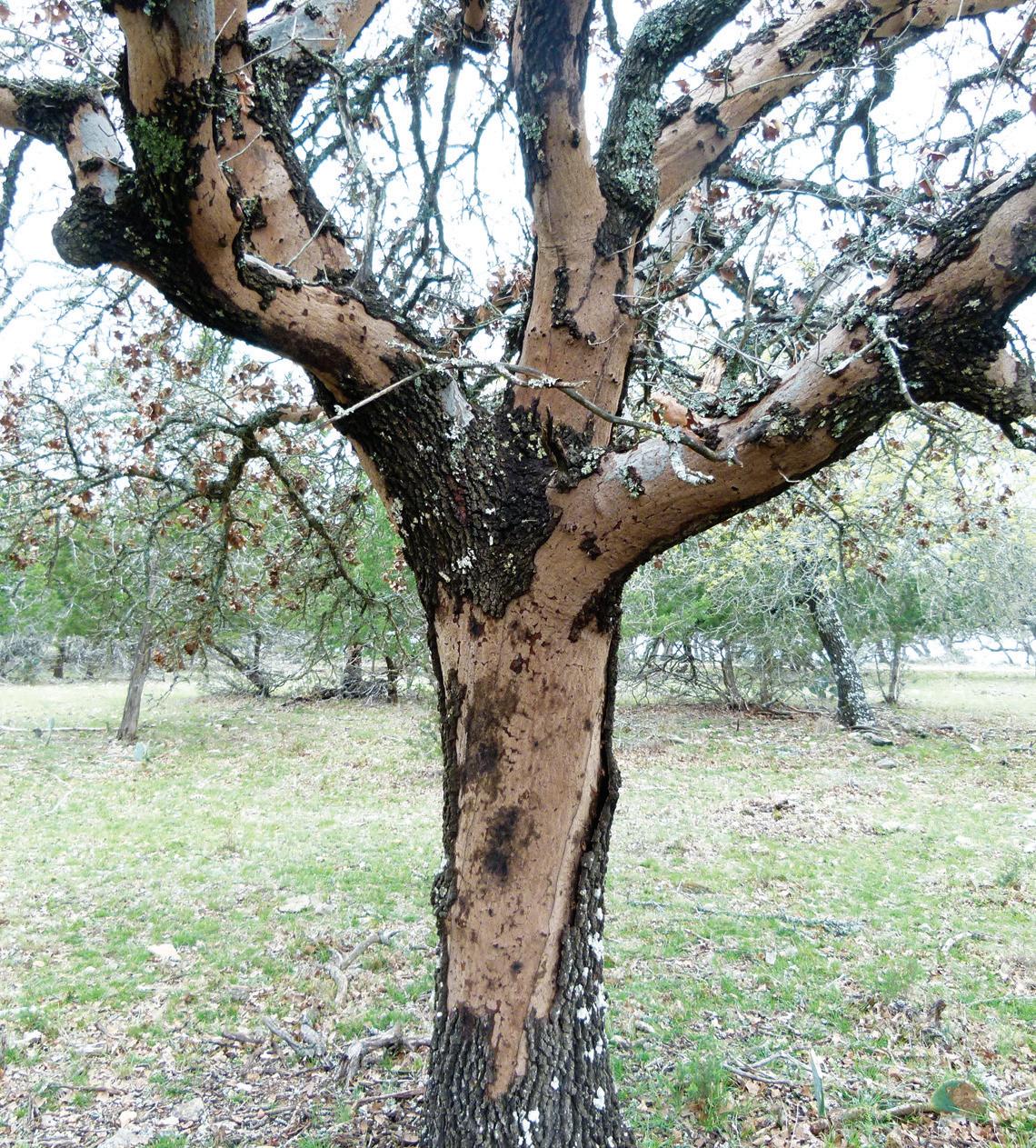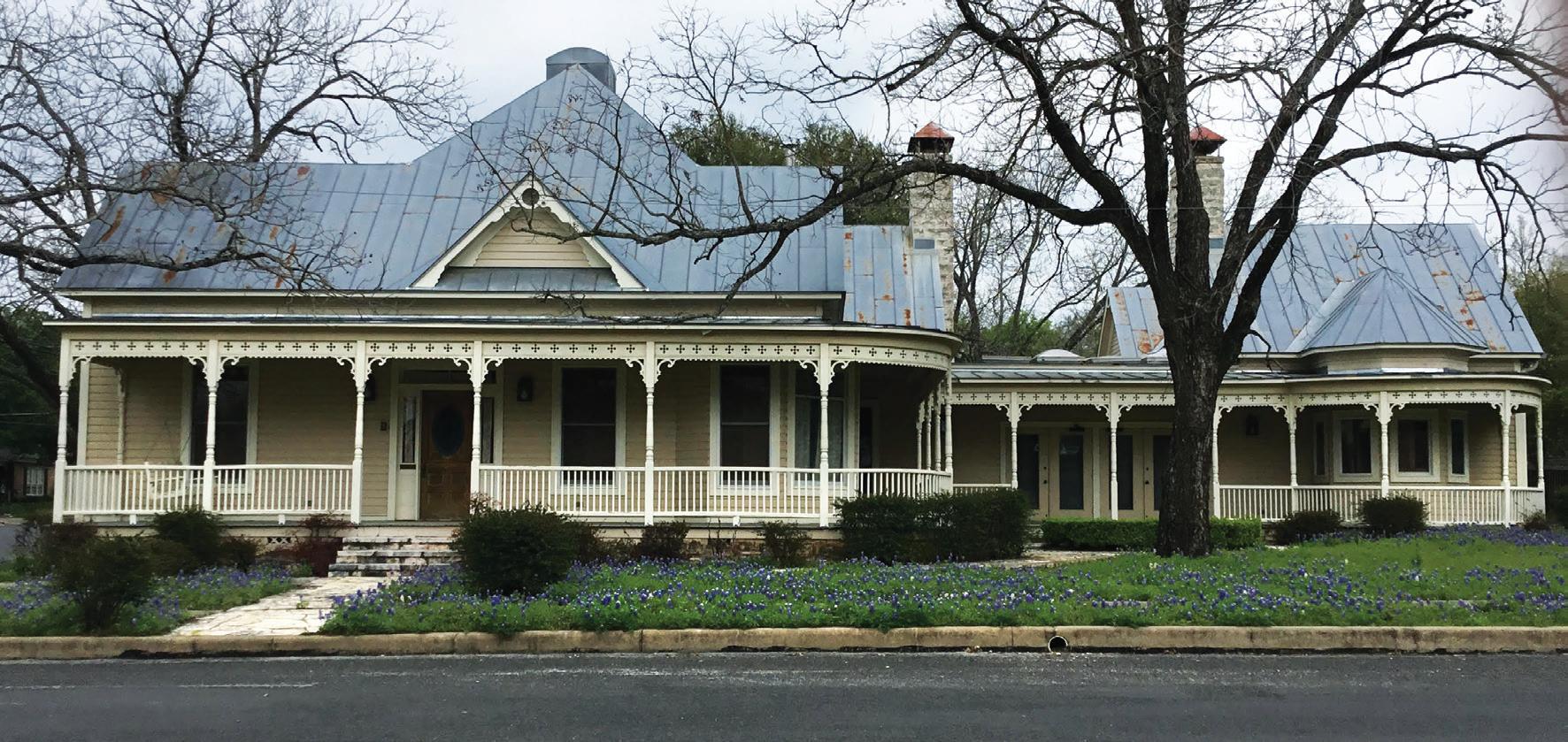
4 minute read
Trees
How fast are we losing our trees?
Drought stress, disease harming hardwood populations
Advertisement
By Jim Stanley
I have written before about what I believe to be the declining numbers of hardwood trees in the Hill Country. The evidence for this has been the fact that almost everywhere I go, I see rather obvious browselines with little or no vegetation (except for cedar) below about four or five feet.
The reasons for this are mainly the excessive numbers of white-tailed deer, although in some areas the number of exotic ungulates may have also contributed, as may the current or past presence of large goat herds. All these browsers eat large amounts of woody plant leaves as their main diet component, and, with very few exceptions, virtually all native hardwood trees are on their menu.
It is a simple fact that finding any replacement hardwood sprouts or saplings within the reach of deer on most properties is a rarity. If there are no replacement hardwoods surviving to become mature trees with most of their leaves above the reach of the deer, then as the older trees die the numbers of these trees will necessarily decline.
What I never had any idea about was just how fast is decline occurring? So, a few years ago I decided to see if I could get any indication about that by counting trees, both alive and relatively recently dead. And because it was as good a place as any to start, and because I knew the area and had a memory of many of the individual trees, I did my survey on part of our property in an overgrazed, overbrowsed wood
A Blackjack tree which died from drought-stresscaused hypoxylon. — Photo by Jim Stanley
Kevin Kramer Construction BULLDOZING • ROAD CONSTRUCTION • HEAVY EQUIPMENT LAKES, TANKS & PONDS, TANK SEALING, WATER BRIDGES

(830) 459-0434 Mobile
ALL EARTHWORK - ROADS, LAND CLEARING, HOMESITE PREPARATION, BUILDING PADS. GRANITE GRAVEL, TOP SOIL, FILL DIRT, PRESCRIBED BURNS & BRUSH PILE BURNING.


land/savanna.
I walked the property counting all hardwood trees (everything except cedar) on an approximately 10-acre area.
It turns out that all of the hardwood trees in this plot were oaks; live oaks, post oaks, blackjack oaks and shin oaks. I counted 392 living mature oaks.
At the same time, I counted 29 trees that had died in the past 12 years or so, most all of which were blackjacks, a lesser number of post oaks and only a very few live oaks.
None of the oaks died of oak wilt, but mostly drought stress and/ or hypoxylon.
There were perhaps a half dozen trees that were counted as living because they had at least one significant limb with leaves, but most of them showed signs of hypoxylon and will likely die in another year or so.
That means that about 7% of the trees in this 10-acre plot have died in the past 12 years plus another 2% that are dying. Extrapolating that rate would predict the loss of about 15-18% of our trees in 25 years.
This may be an aberration, since I believe we have lost a larger percentage of trees during and just after with the drought of 2011 than we had in previous years.
So, if we have higher rainfall years, the rate of die-off may be lower. But then again, we could also have more drought years.
Significantly, I did not see ANY young trees or saplings with trunk diameters of even as much as a half-inch or a height of over six inches.
Some short live oak and shin oak root sprouts with a half dozen leaves were seen, but the deer will soon take care of them.
Interestingly, inside our one-acre high fence, I counted 43 mature hardwoods, and two dead blackjacks.
But then I also counted 102 hardwood volunteer trees over two feet tall that came up because of seeds or acorns spread by birds and animals or root sprouts from mature trees — some of which would certainly become mature trees in a natural habitat as a few are already over eight feet tall!
These volunteer trees include live oaks, post oaks, blackjack oaks, hackberry, escarpment black cherry, flame-leaf sumacs and possumhaws.
Clearly, young replacement hardwoods can still become mature trees when browsers are excluded or their numbers greatly reduced.
This survey certainly doesn’t constitute any kind of scientific study and the numbers I found on this one plot of land may be very different from other places in the Hill Country with other mixtures of species and other soil and environmental conditions and deer populations.
And, while we may hate to see the loss of any of our trees, the Hill Country will still be beautiful with fewer trees and it probably had fewer in the past than it does now, anyway.
But it would be nice if we had fewer deer to hasten the decline of our hardwoods.
Jim Stanley is a Texas Master Naturalist and the author of the books “Hill Country Ecology,” “Hill Country Landowner’s Guide” and “A Beginner’s Handbook for Rural Texas Landowners.” He can be reached at jstmn@ktc. com. Previous columns can be read at www.hillcountrynaturalist.org.
Call us for all your roofing needs at 830-997-8131-Office or 830-889-3600-Cell Durst Sheet Metal & Roofing Inc.

For 40 years serving the Hill Country & surrounding areas with reliable, quality roofs. We do standing seam metal roofs, wood shingle roofs, tile roofs, composition shingle roofs, and single-ply roofs. Owned and Operated by Glenn Durst Water tightness is guaranteed! We’re Still Here!









